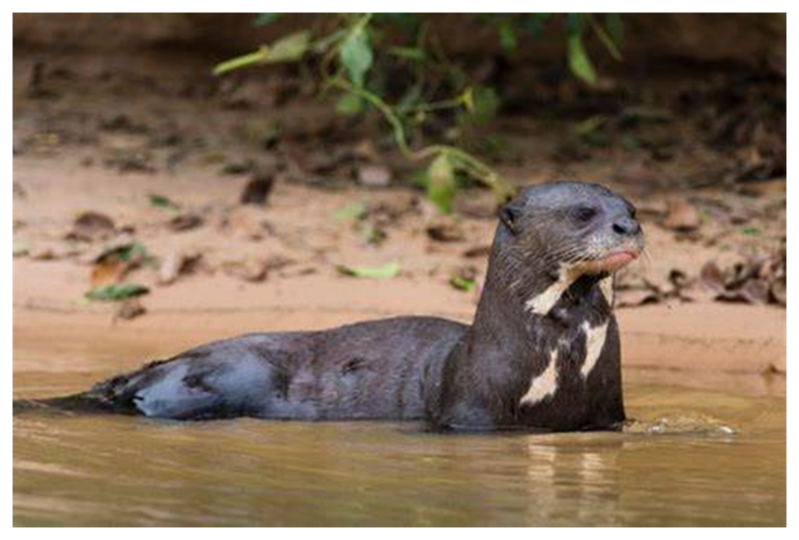The giant sea otter needs our help! Since 2000, these otters have been on the brink of extinction. This species helps maintain a balanced aquatic ecosystem by acting as an indicator to water quality and keeping fish populations in check.



Otter Location
Giant otters live along the Amazon, Orinoco and La Plata River systems in South America. These are slow moving river systems that otters are typically found in. They also can survive in swamps, marshes, and flooded forests during the rainy season.
Their habitats reach miles of open river surrounded by dense vegetation. It's warm almost year-round and has open access to food. 4-8 otters live in a family group.

Feeding Strategies
Predators
Giant river otters use their Vibrissae or whiskers to detect prey in the water. They then catch pray with their mouths or use their feet to grab them. They often hold prey in their paws while eating. Otters also have a third eyelid, which helps them see underwater. Otters eat fish such as catfish, perch and characins. Though they can also eat small snakes turtles and crustaceans.
1. Jaguars
2. Black Caimans
3. Anacondas
4. Humans
Humans can hunt otters for meat and fur. Also, gold mining in their habitats contaminates the water they live in, and overfishing takes away their food source.
Endangered Species
The Giant River Otter was declared endangered in 2000 and vulnerable in 1982. The otters are endangered due to habitat destruction which is mainly happening in the Amazon where mass productions of deforestation, mining, and construction of roads occur. Water pollution is also a threat because nearby mining sediments pollute the water, runoff enters from nearby roads, and overfishing occurs. There is also historical hunting for its fur. In the 20th century there was a lack of wild river mercury, so commercial hunters hunted for giant river otter fur and almost drove them into extinction but now the hunting of fur is banned. The otters also have a conflict between humans as they find themselves competing for the same fish species as the otters.

Extinction
There are estimated to be around 2,000 to 5,000 otters left with a 50% reduction of population in the next 25 years. The otters are projected to be extinct in the next 50-100 years.
If we are not able to restore the population, they would be extinct by 2075.

Support
Here are some locations to support:
1. Golden Gate National Recreation Area in California
2. Giant River Otter Ecology Project
The goal of the project is to monitor the otter behaviors and release them into the wild.
3. Los Angeles Zoo
They are partnered with Argentina's National Parks Administration to support giant river otters by sending the otters to an introduction program in Argentina in a specific area where the species had gone extinct.
The otters would then be released and will help to rebalance the ecosystem on both water and land.
4. Philadelphia Zoo
5. William Rodgers Park Zoo, Rhode Island
Solutions
Donate to the Save The Giant non-profit project or you can volunteer in Yupukari, Guyana to do field research on the giant river otters. This organization also educates the local communities on how they can support the otters

The River Otter Ecology Project offers an “Adopt an Otter” program, or you could volunteer to become an “otter spotter” which is where you monitor and track the otters. Donations and gifts are also accepted.

Add comment
Comments